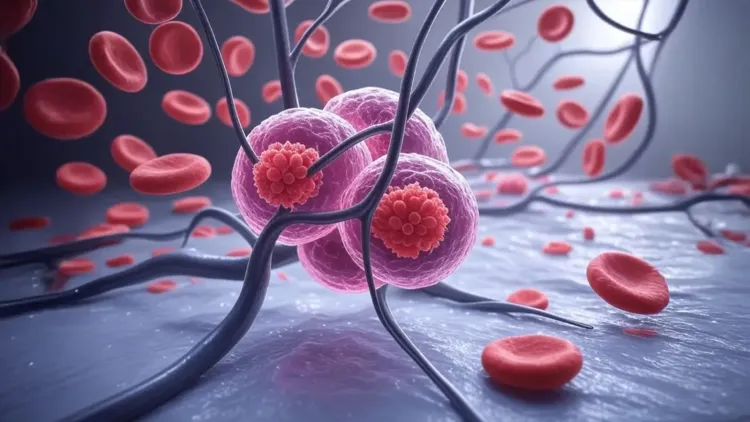Could Tiny Nanopores Transform Early Disease Detection?

Synopsis
Key Takeaways
- Innovative nanopores mimic natural molecules for disease detection.
- Created by scientists at BRIC-RGCB in Thiruvananthapuram.
- Can selectively allow certain molecules, aiding in personalized diagnostics.
- Potential applications extend to cancer treatment and beyond.
- Collaboration involved multiple prestigious institutions and funding bodies.
Thiruvananthapuram, Oct 3 (NationPress) Picture a microscopic tunnel capable of indicating the onset of cancer – this concept is becoming a reality thanks to the efforts of scientists at BRIC-RGCB in Thiruvananthapuram.
In a significant advancement, the researchers have engineered mirror-image nanopores, minuscule protein-like channels crafted to mimic natural molecules.
Under the guidance of Dr. K.R. Mahendran, the team devised these synthetic constructs, referred to as DpPorA, using specialized peptides that are inverted versions of natural proteins.
Simulations conducted on computers demonstrated that these mirror-image pores are structurally inverted compared to their natural equivalents – and interestingly, this “mirror effect” enhances their stability and selectivity.
Their research findings have been published in Nature Communications.
“These nanopores function as highly selective gates,” Dr. Mahendran noted. “We can customize them to allow specific molecules to pass while blocking others. This capability means we can detect everything from tiny sugar rings to large proteins, paving the way for early disease detection and even personalized diagnostics.”
Moreover, laboratory tests have shown that these mirror molecules can specifically target and damage cancer cells while leaving healthy cells intact – indicating promising future therapies for safe cancer treatment.
Prof. Chandrabhas Narayana, Director at RGCB, praised this discovery as revolutionary. “It has vast potential—not only in cancer management but also in wound healing, muscle repair, and enhancing immune response. It might even provide solutions for neurodegenerative diseases like Alzheimer’s and Parkinson’s,” he commented.
This research was a collaborative venture, involving CSIR-NIIST in Thiruvananthapuram, Constructor University in Germany, and the Centre for Human Genetics in Bengaluru.
Funding was secured from leading Indian scientific organizations such as the Department of Biotechnology, Department of Science and Technology, ICMR, and CSIR.
By merging chemistry, nanotechnology, and cancer biology, this study has forged a potent new instrument that could revolutionize medical diagnostics.
These minuscule mirror-image pores may eventually assist in early, safe, and precise disease detection, fundamentally altering how physicians diagnose and manage illnesses.









